Pants Buttons
My first post on this version of the blog was focused on trouser buttons ( http://www.austbuttonhistory.com/uncategorized/26th-june-2020/), as have been further posts. They are also known as suspender, braces or (in America) pants buttons. The majority of buttons featured on the branded/tailors’ buttons are of this type. I’ve found a great article on these in the May and September 1961 editions of the National Button Bulletin, which I recommend you look up if you are a member of the National Button Society. In honour of those articles, I’ve named this post ‘Pants’ rather than ‘Trousers’!
According to the authoress, Jane Ford Adams, the current form of pants buttons date from around 1830-1840, when numerous patents for these class of buttons started to appear. Previously pant buttons of both shanked or sew through types had the problem of wear causing the thread holding the button to break. The patents described variations on the type of pants button now familiar to us, basically sew-throughs with improvements to shape of the buttons and the form of the holes to protect the thread from wear. The name “ring edge” relates to a 1842 patent where the edges around holes were compressed until it appeared that “a ring were let into the button”. So that’s what the terms “Best Ring Edge” and “Double Ring Edge” refer to! Shanked pants buttons seemed to be completely superseded by 1840.
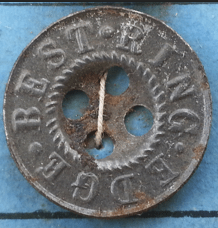
Depressing the holes below the ‘ring edge’ protected the thread being rubbed by the top layer of material of the fly.
There were also patents referring to the shape of the holes so that they did not cut the thread, and of course, patents for making pants buttons cheaply! Some of these buttons have patent marks.
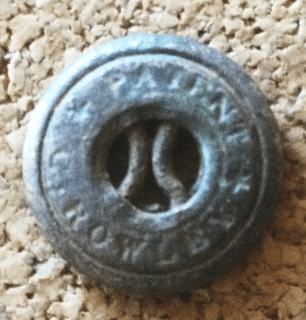
PATENT C. ROWLEY This was a British Patent.
The metal buttons have been made in both one and two piece designs, although they are all small, flattish sew-throughs. They vary from one to four openings on the face. The holes may be round or square, close set (goggle eyes) or spaced. In some there is one or two bars (like the C. Rowley button above) integral to the opening, or attached across the back.
The vast majority of pants buttons found in Australia, of both metal and vegetable ivory, are of the 4 hole type within a recessed centre. Most are marked with the customer’s name or brand. Some have slogans, like ‘Ne Plus Ultra” (which apparently is no sign that this was a French made button, as English, German and American makers used French phrases, or marked their buttons ‘Paris’, to enhance their perceived quality). I have one that simply states ‘Tailor Made’. Only a couple of mine have pictorial designs or patterns on the face, which apparently are found elsewhere. The examples are below.
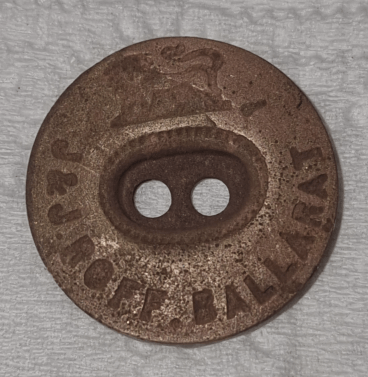
Two hole. Embossed lion.
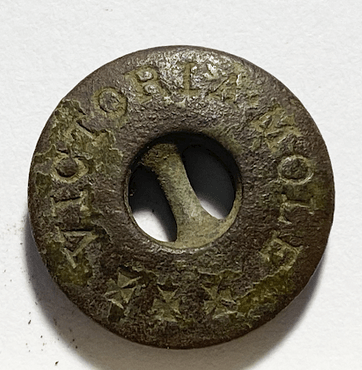
Two hole with an intergrated bar. 3 Maltese crosses.
Most pants buttons were made in Britain, America, France, Germany and (for vegetable ivory) Italy. Some, however, were made in Australia. Post WW2 vegetable ivory pants button were replaced by plastic.
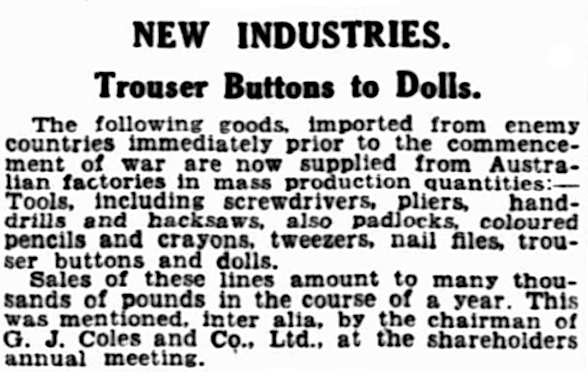
The West Australian (Perth), 27th August 1940 page 11.
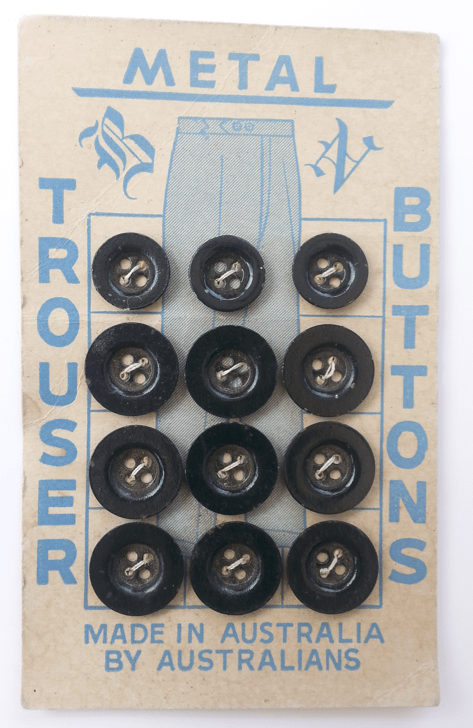
There are uniform pants buttons, such as these marked with a King’s Crown and the words ‘Commonwealth’ and ‘Defence Department’.
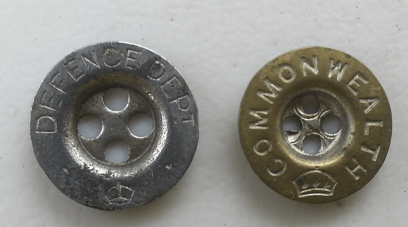
A very special uniform trouser button was featured last December:
http://www.austbuttonhistory.com/uncategorized/17th-december-2020/

The Herald (Melbourne), 9th September 1879 page 3.
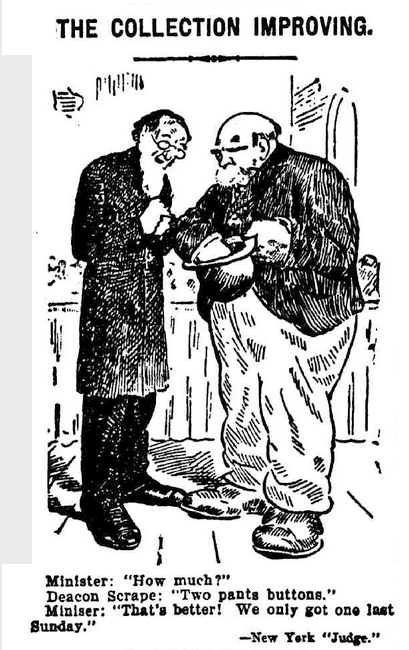
The World’s News (Sydney), 1st November 1902.
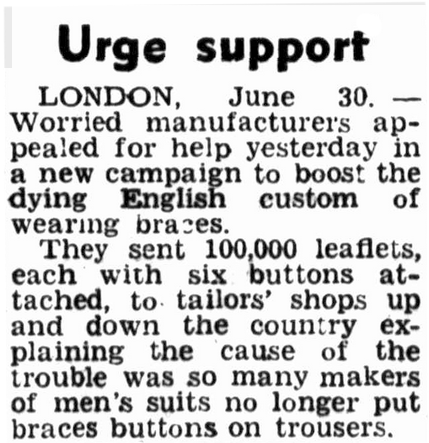
Daily Mercury (Mackay, Qld), 1st July 1954 page 4.
